KUser
 |
KUser — це інструмент для керування обліковими записами користувачів у вашій системі. |
Можливості
- Додавання, зміна та вилучення облікових записів користувачів.
- Додавання, зміна та вилучення облікових записів груп користувачів.
- Керування паролями.
Початкове налаштування
Типово, у дистрибутивах не встановлюється KUser, отже вам доведеться встановити програму вручну. KUser є частиною пакунка kdeadmin. Після встановлення програми ви можете запустити її за допомогою пункту меню або за допомогою KRunner (Alt+F2): просто введіть команду
kuser
Користування KUser
Після запуску KUser буде відкрито вікно з двома вкладками: Користувачі і Групи.
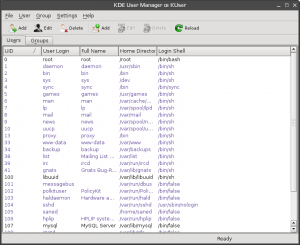
Користувачі
Наведення вказівника на пункт запису користувача з наступним подвійним клацанням лівою кнопкою миші відкриє діалогове вікно з декількома вкладками. Кількість вкладок залежатиме від типу системи зберігання даних користувачів та використання квот.
Відомості про користувача
- Modify the user-properties like , , or set/change a for example. You can also .
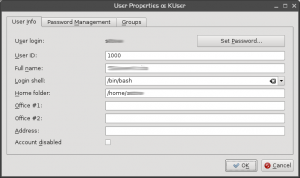
Password Management
- Change password settings, like the time after which a password has to be changed, or set a time at which an account will expire.
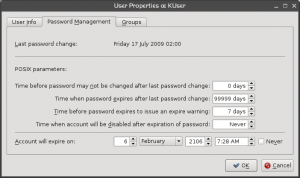
Groups
- Add or remove groups the user belongs to.
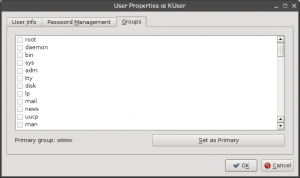
Groups
Double clicking a opens a dialog, where you can of the group and to/from a group.
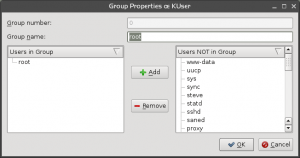
Configure KUser
Click and you can set up defaults for creating a new user:
General
- set the , the or the .
- choose if a will be created and if a (standard configuration files) will be copied to the home folder.
- set a , which creates a own personal group when a user is added and removes it, when the user is removed.
- set a .
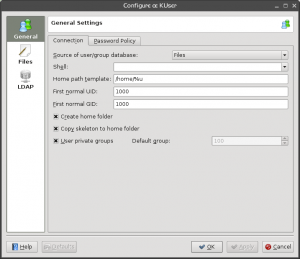
Files
- set default paths for password, group file, password shadow file and group shadow file.
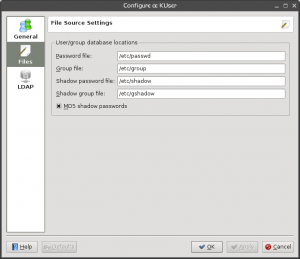
LDAP
- set preferences for users in a local network
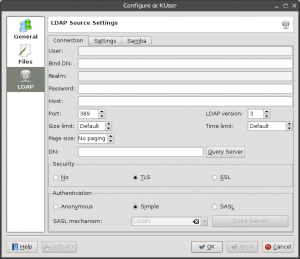
More Information
- KUser Manual (it is from KDE3 Days, but still valid)



